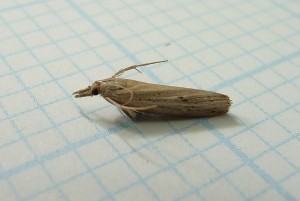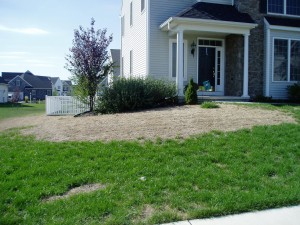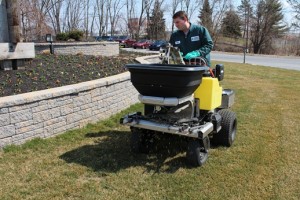What are they?
These moths are the adult form of Sod Webworms, a common lawn pest. The larval stage of these moths is a voracious pest of lawns. The are also much more difficult to find than their flying, adult counterparts. Sod Webworm larvae overwinter in underground tunnels beneath your lawn. These small larvae are approximately 1/2″ long and blend in very well with your lawn. When the overwintering larvae get to late spring, they pupate and then the adult moths emerge 10-14 days later, typically in June. Adult moths can be recognized as they dart in a zigzag pattern over the grass. After mating, female moths can lay up to 200 eggs, which will hatch into young larvae, ready to feed on your lawn in as little as 7 days.

When will I see Sod Webworms?

What to do?
Getting rid of Sod Webworms is fairly easy. A granular or liquid insecticide labeled for their control will give your lawn about 30 days of relief from these pests. However, it will only control actively feeding larvae, if the material comes in contact with them. Granular products need to be watered in to start working, but are very effective in killing lawn insects as it is absorbed into the grass plant’s tissues they are feeding on. A lawn care company can provide individual treatments for lawn insect control to address this pest. These applications also typically will help with Chinch Bug control as well. A more proactive approach to lawn maintenance is to have a lawn care program that will include treatment a couple times during summer months to manage insect populations before they start damaging your lawn. If you need help with insect control for your lawn or any other lawn care concerns, we’d love to talk.

